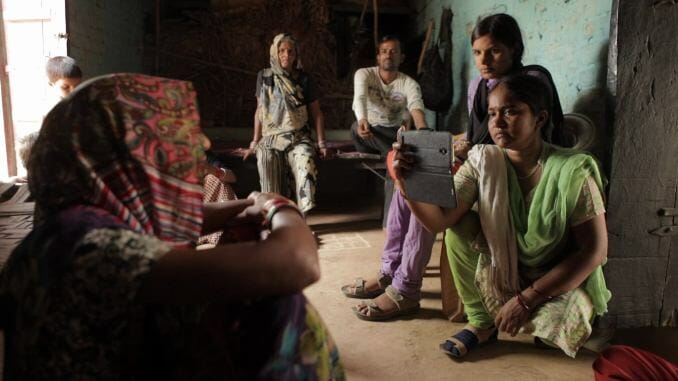Writing with Fire Exudes Journalistic Drive and Smoldering Sisterhood

At this point, even the most casual global news consumer is at least tangentially aware of certain social issues inherent to India. The perpetuation of the caste system, second-class citizenship for women and Prime Minister Narendra Modi’s far-right Hindu nationalism are perhaps the most consistently covered facets of India’s injustices in mainstream media—yet the daily plights of average Indian citizens go largely undocumented and without justice. Whether it be mass power shortages, public infrastructure sabotaged by local mafiosos or lack of police accountability in arresting rapists, many of India’s most vulnerable are left without any semblance of governmental or community support. Luckily, locals of Uttar Pradesh—India’s most populous (and arguably most corrupt) state—can uniquely count on the Khabar Lahariya newspaper to bring these injustices to light. Distinct in that it’s run by women of the Dalit caste (often colloquially referred to as “untouchables”), the paper’s writers, reporters and on-air correspondents are well-aware of what it feels like to have their struggles minimized.
In chronicling Khabar Lahariya’s 2016 pivot from print to digital and the heightened reach of the newsroom’s reporting, Writing with Fire also follows reporters as they break the very stories that make the paper’s transition so effective. At the center of this effort is Geeta, Khabar Lahariya’s chief reporter, who ushers the paper into the digital age by supplying each reporter with a smartphone and establishing an official YouTube channel. Though most of the writers initially express anxiety over the decision to go digital—English keyboard characters and finicky touch screens appearing to hinder more than help—these fears are subdued when Geeta plainly states to her staff that this shift will surely bring in much-needed money and resources. Sure enough, funds to buy previously unthinkable newsroom luxuries such as lapel mics, tripods and passports begin to trickle in.
Writing with Fire marks co-directors (and spouses) Rintu Thomas and Sushmit Ghosh’s first feature film, and as such the standard, studied approach they employ in their documentary feels both appropriate and somewhat masterful. All of the elements for a stellar narrative feature are present: Compelling characters, staggering stakes, topical commentary on a subject that’s still sadly under-explored. As such, it’s smart of the directors to stick to the bare-bones necessities of documentary, for it also highlights the fact that journalism does not need to be flashy or ostentatious in order to be effective. As long as it’s challenging systems of power and advocating for those that might otherwise be voiceless, it is acting as a necessary appendage of democracy.
-

-

-

-

-

-

-

-

-

-

-

-

-

-

-

-

-

-

-

-

-

-

-

-

-

-

-

-

-

-

-

-

-

-

-

-

-

-

-

-








































